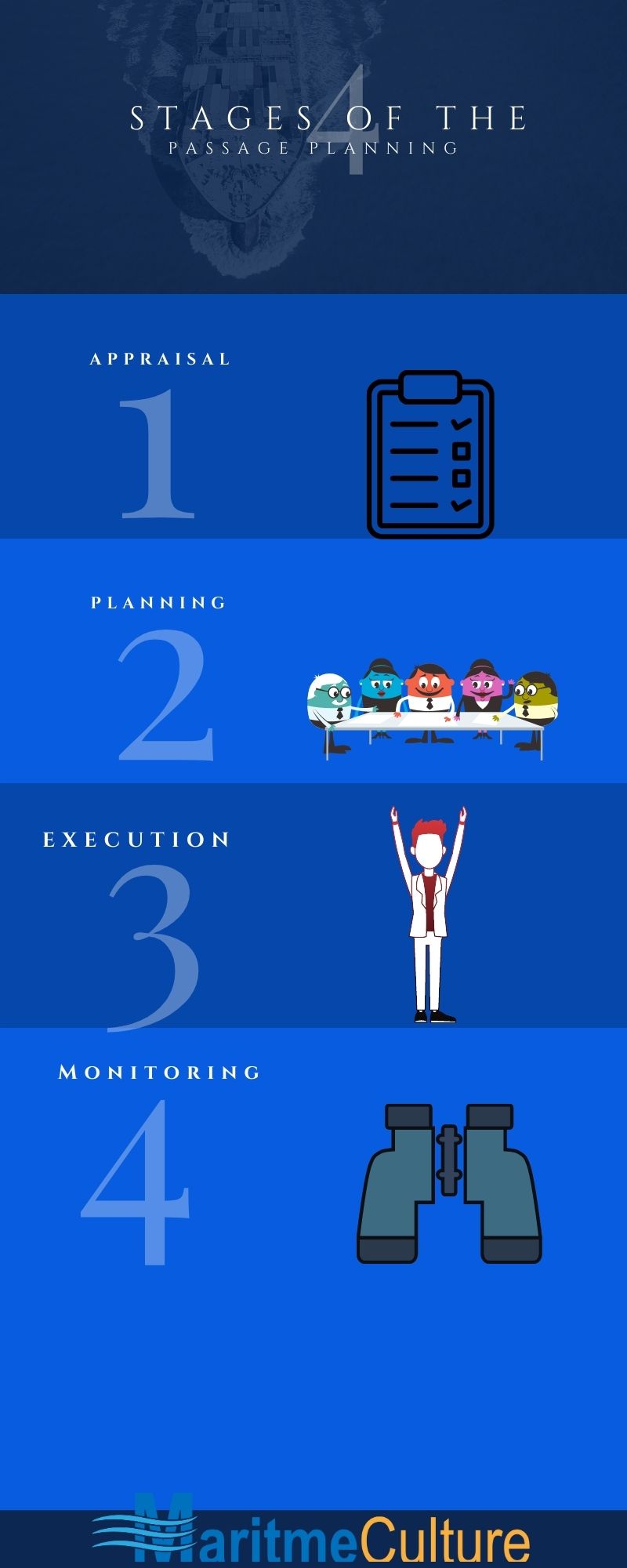The ship voyage planning is an essential phase in the operation of a ship.
The VPP or voyage planning in nowdays is make by the ECDIS considering that a good ecdis operator is fundamental in order to achieve the best result, is not the only point to consider while you are making a voyage plan on board your ship.
There are other important point to take into consideration, in this article we will take a look to the raccomandation given by:
1-Safety of Navigation Annex 24- Voyage planning
2-Safety of Navigation Annex 25 – Guidelines tor Voyage Planning
3-STCW 95 – Chapter 8
4-Bridge Procedures Guide
Page Contents
KEY POINTS of Voyage planning and why make a passage plan
• The passage plan ensures that the bridge management team is fully aware of the vessels intended voyage and of the contingency plans.
• The plan is from berth to berth and any changes to the intended voyage must be amended in the plan.
• The Master is overall responsible for the plan but may delegate the task of creating it.
After considering the key points of a voyage planning, now it is time to move to the most important and pratical part of a passage planning on board of a ship, that are:
The four point to consider during a voyage planning
If you are a professional officer, of course you will know about this point, but the aim of this article is to remind and keep constant in mind how to make a good passage plan for your ship.
Appraisal
From consulting all relevant publications the potential dangers on the voyage are identified. After considering existing routeing schemes, environmental factors, reporting systems and vessel traffic services a clear indication of a safe route can be obtained.
Important point to covering during the appraisal phase are:
-Gathenng of information
-Consider manoeuvring characteristics of vessel Deepest draught
-Vessels certification is in date
-The latest charts and publications used are the most up to date
-The charts used are the largest scale available
-Consult tide atlases and tide tables
-Determine relevant traffic routing schemes.
-Consult port guides
-Obtain weather information.
Planning
Tracks can be laid on the chart from berth to berth indicating the pre-determined margins of error. Danger areas are marked on the chart, as are points, which could be useful to navigation.
In the event of an emergency contingency plans are also considered. The plan is approved by the Master prior to sailing and must be kept onboard the vessel for 12 months.
-Plot true course on charts.
-Consider safe passing distances off land/critical areas. Safe speed
-Alter course points clearly marked.
-Methods of position fixing.
-Parallel index lines shown.
– Contingency plans considered.
Execution
Once the departure time is known the estimated time of arrival at the destination can be found. ETA’s at critical points in the plan can also be determined.
Times of high water and a clearer indication can be gained of the conditions the vessel is likely to face throughout the voyage.
-Once departure time is known calculate accurate tidal heights and tidal flows
-Obtain latest meteorological information.
-Calculate ETA’s at critical areas
-Consider traffic density at critical points on – the voyage.
Monitoring
The vessels progress is continually checked against the planned route. Any necessary deviations are amended in the plan and the bridge management team advised. The navigational equipment is monitored and checked on passage and prior to departure.
-Obtain regular weather forecasts.
-Cross check all position . fixing methods.
-Regularly check all navigational equipment.
-Update ETA’s.
-Comply with mandatory reporting procedures
-Enter route information in AIS.

